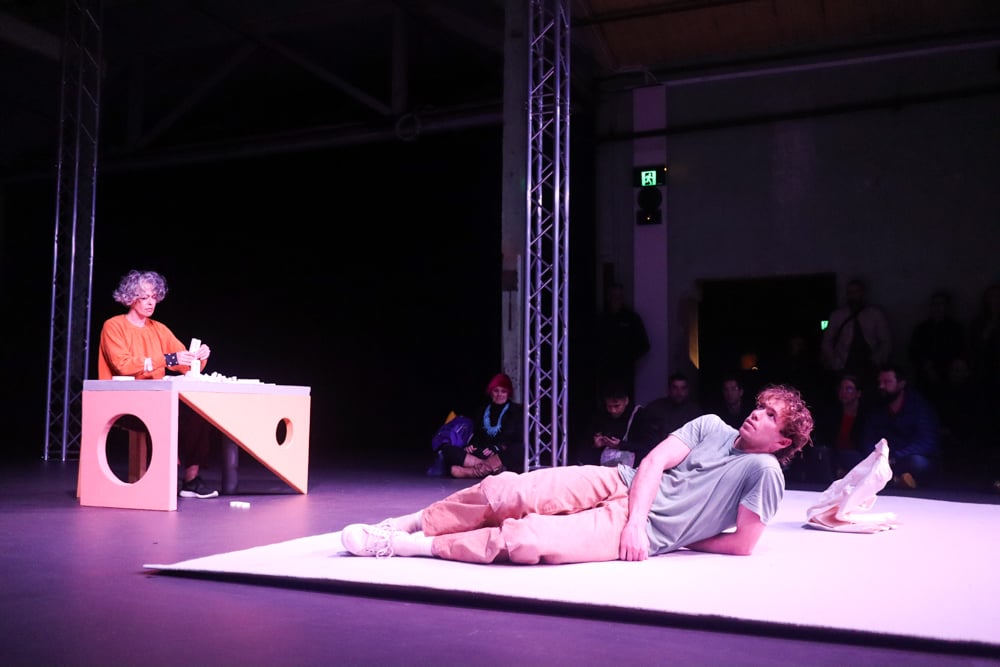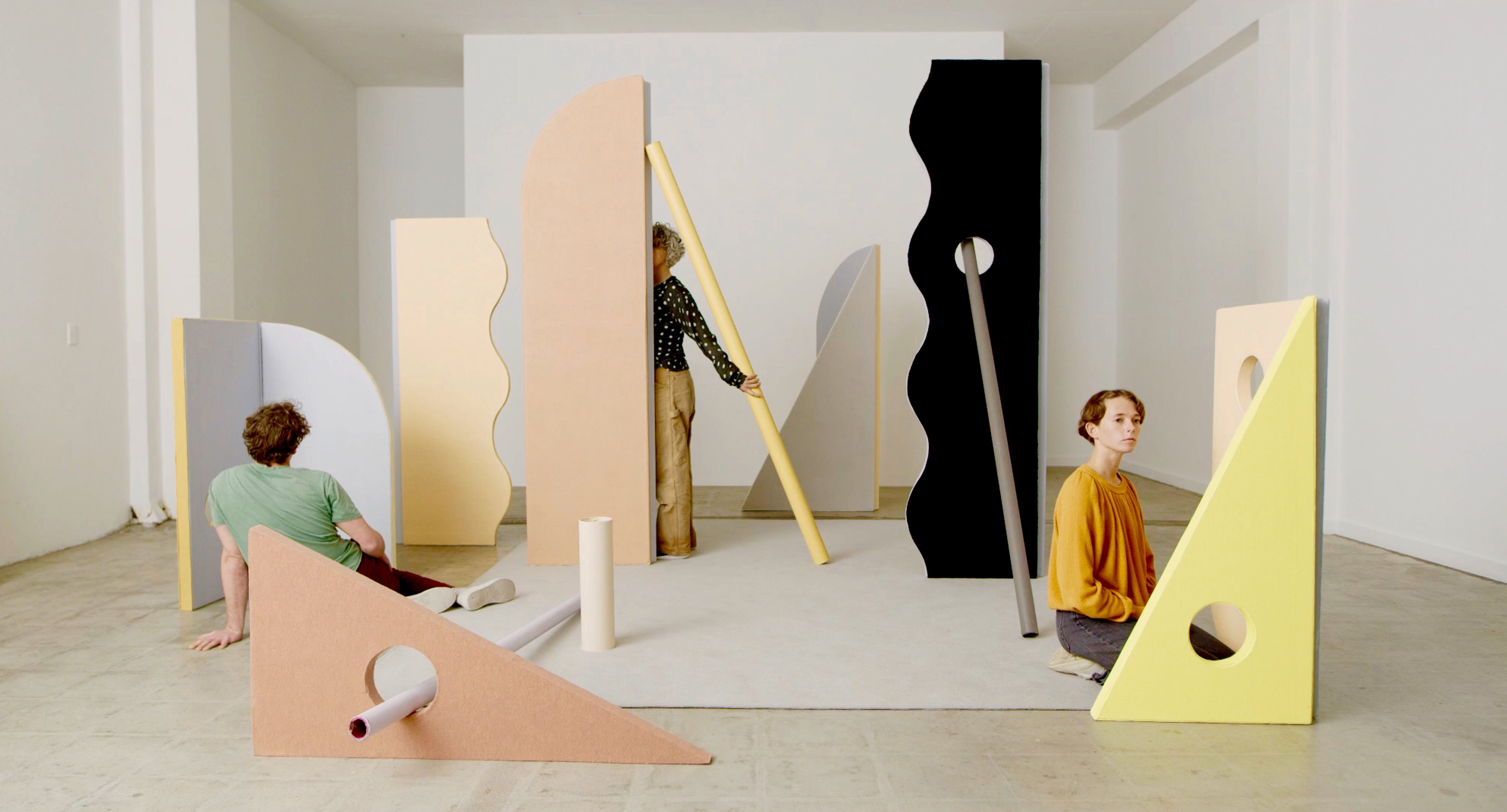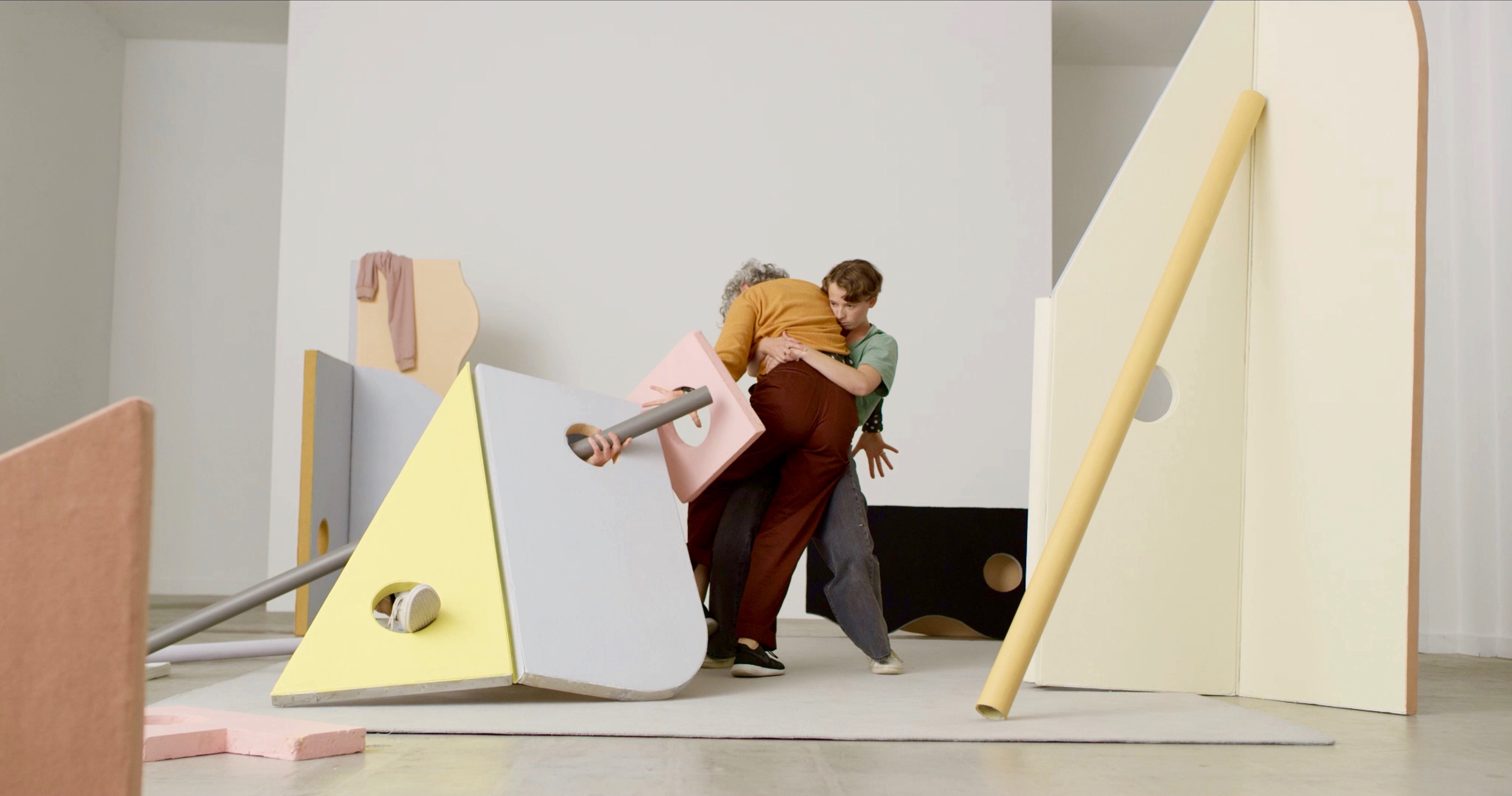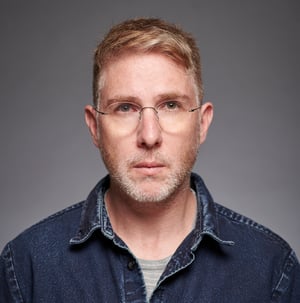PSC's Master of Arts - Photography tutor David Rosetzky debuted his show Composite Acts last Saturday. It was a collaborative effort comprising live performance, video, music and sculptural works for one night only. Commissioned by Channels Festival, it examines the relationship between language and desire, social dynamics and power. With more than 20 years of experience in the industry, David talks about how he combined all these different disciplines together, why he avoided gender and sexual binaries and what inspires him to create such cutting-edge work.

David Rosetzky at the opening of Composite Acts at Abbotsford Convent.
Why did you take on such a big project comprising live performance, video, music and sculptural works – and how does this fit within Melbourne's art scene?
Melbourne has a strong history of contemporary dance and multi-disciplinary projects. There is a large community of practitioners in Melbourne and Australia who work across a range of art-forms including video installation, performance and visual art. I find cross-disciplinary practice exciting as you can create unexpected combinations and new outcomes by drawing from a range of genres, histories and languages, from moving image, theatre, dance, visual art and music.
How did you create this work and how long did it take?
Through a collaborative and multidisciplinary process, over a number of years of development and intensive workshops, a performative score had been devised which formed the basis of the video work, and live performance. Similarly, early experiments of the set design were brought into the creative development sessions to explore how these might affect and inform the project. I discussed the work’s ideas and themes with the different collaborators and how each medium could further intensify or accentuate the ideas within the work, it was through a process of experimentation that the different outcomes for each medium was identified and ultimately chosen to form part of the final outcome.

Still from Composite Acts at Abbotsford Convent.
Why did you present this installation as a live performance?
There is an intensity in the live performance which has a different effect on the viewer to video, it’s a more direct experience. Live performance also exists within the moment which activates the performance within a real space, shared by the audience and performers together. I think in this age where our experiences of the world are becoming increasingly mediated through screens – live performance offers something challenging and real to audiences, and the relationship between the real and the representation or the image is something that has always fascinated me, and I am drawn to explore in my work.
Given the many elements in Composite Acts and years of development, when did you know this project was ready to be shown?
I think when you are convinced of something yourself – when you can respond to in the way that the audience might respond, when there is clarity within the work and you feel comfortable with how its reading, then you can anticipate how it may be seen by audiences, and it’s ready to be shown.

Still from Composite Acts at Abbotsford Convent.
Why is the relationship between language and desire a story you wanted to tell?
The relationship between language and desire is an interesting one – and what happens if we purposefully confuse or abstract language in order to explore desire in new ways. I think this is something I wanted to explore with composite acts – this shifting between what is known and what is less prescriptive – in the hope of providing an abstract field, of shifting component parts, some recognisable and others less clear – that can enable a number of different possibilities for the audience to project their own desires upon.
How did you approach exploring non-binary identities?
My aim with Composite Acts was to present identity, sexuality, gender as a range of potential options, rather than a given – something that is fixed or essential. It is important to me that the performers in my work explore a number of subject positions and modes, as I believe this is indicative of who we are as humans – creatures of change – shifting in relation to our context, and environment. Similarly, the work aims to avoid binaries regarding sexuality and gender – as I don’t think they are useful, they are restrictive, reductive, conservative and unnecessary.

Still from Composite Acts at Abbotsford Convent.
You seem to keep building upon and reinventing previous themes and works, tell us about this process?
I think all artists return to similar themes within their practice, the challenge is to find new ways to explore these themes. This is where returning to study, where you can be challenged and inspired by your peers, lecturers and mentors – or by collaborating with a diverse range of practitioners, as in my case, can provide new ways to approach the ideas that continue to hold your attention and fascination. And through this kind of dialogue your work progresses and can take on exciting new forms and outcomes.
How do you collaborate with each artist on this project?
I think it’s important to be very clear from the outset, what you are asking of your collaborators, so they can know and understand what their role is within the project, and what they are being asked to provide. It is also important to communicate – what the project is about for you and how it relates to your practice, the ideas you are hoping to explore and what you are motivated by. If you can communicate the ideas and questions that you are working with, then your collaborators can get on board and invest in those ideas with you and offer new possibilities and inspiring potential new outcomes.

How do you stay constantly inspired to create such projects?
It’s the possibilities that keep me inspired, asking questions within he the work and of course – the collaborative nature of my practice is a constant source of inspiration; I love working with people and am energised by their engagement with ideas and the different ways that ideas can be manifested through – movement, material form, cinematography and the combination of all of these things.
Tell us about the grant you received for Composite Acts?
For this project, I received a project grant from The Australia Council for the Arts, which in addition to the commission fee from Channels Festival, enabled me to spend an intensive period with the creative team to devise the performative score, and to undertake the video post-production process.

You have a wealth of experience, knowledge and connections, how do you impart this to your Master of Arts – Photography students at Photography Studies College?
I have over twenty years of experience creating a range of multi-disciplinary and collaborative projects, that have been shown nationally and internationally, through this experience I can offer masters students insights into my process and art-industry knowledge that can assist them achieve their own artistic goals and ambitions.
Tell us a bit about PSC's masters program?
The masters program at PSC provides a highly professional and rigorous framework in which students can test and explore their ideas in a supportive and critical environment. The course is taught by leaders in the field of lens -based practice and also offers access to international networks of curators, artists, academics and photographic communities. PSC is an inspiring place to work and I encourage anyone who is wanting to further their practice, challenge their ideas, and develop their career in photography, to get involved in the masters program.

Portrait of David by Peter Rosetzky
